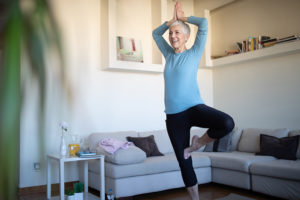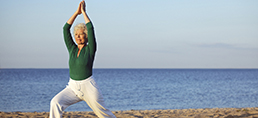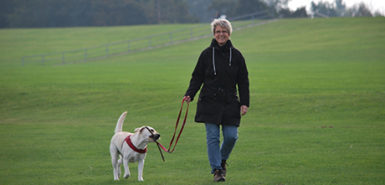
Looking to find balance in your life?
As a physical therapy assistant and occupational therapy assistant, I frequently treat people who — through injury, illness or deconditioning — struggle to find their balance.
Life without balance is difficult to navigate. Walking, ascending or descending steps, bending or reaching all may become quite frightening.
Some have fallen and, fearful of another tumble, develop a mental block and have difficulty advancing through therapy and rehabilitation. They feel safer by not moving at all, which derails their recovery efforts.
Overcoming this paralyzing fear is often a matter of trusting in their therapists and care providers, and trying various therapy techniques to move forward.
The key to avoiding this scenario — and gaining or maintaining balance throughout our advancing age — is keeping our bodies moving through life.
There’s an old adage of move it or lose it, and balance is one of the things we lose if we stop moving. The benefits of movement and exercise on the human body cannot be overstated.
Research shows us some of the best things we can do for balance are also interesting and fun. Among them are these four proven winners: Tai chi, balance training, gentle yoga, and virtual reality Wii balance training.
One study evaluated the first three, aiming to determine whether one is more beneficial for older individuals with a history of falling.
Each of the exercise programs target known areas that improve balance, including postural stability, improved walking speed, increased activities of daily living function, and decreased fear of falling.
The researchers looked at five tests to measure the outcomes of the exercise programs: the 8-foot up-and-go test, one-leg stance, functional reach, and usual and maximal walking speed. The study excluded individuals with neurological impairments affecting balance.
In looking at the results of the study groups, the group that participated in the balance yoga showed more improvement over Tai chi and the standard balance exercise program.
The balance yoga program improved performance for all tests. Additionally, with the increase in popularity of yoga, the use of balance yoga might be more mainstream and acceptable to older individuals.
Still, all participants showed gains in balance with each of the three programs when compared to their pre-exercise baseline.
In another study, researchers looked at how to improve balance and functional mobility in neurologically impaired patients using virtual reality as a training method.
Using a Nintendo Wii balance training program, participants all experienced gains in mobility and balance. One of the drivers of this success was that the vast majority of the people found using the Wii training module to be enjoyable.
This is a powerful message because patients often will not perform exercises prescribed if they are not enjoyable, even if they are proven to be effective.
Also a major factor in facilitating their therapy and recovery is that the Nintendo Wii provided instant feedback while they exercised and as it monitored their balance through a mechanical algorithm. This allowed for faster improvement with balance activities being performed.
The key takeaway from these and other studies? Keep moving your body in ways that are fun and enjoyable. Every bit of exercise and movement counts. Slow, purposeful and choreographed movements matter.
Tai chi, yoga and balance training all fit the bill for what’s needed to keep our balance strong well into our golden years.
It is about finding what is enjoyable for you, works for your body, and can be sustained for the long term.
 /a>
/a>
 /a>
/a>
 /a>
/a>